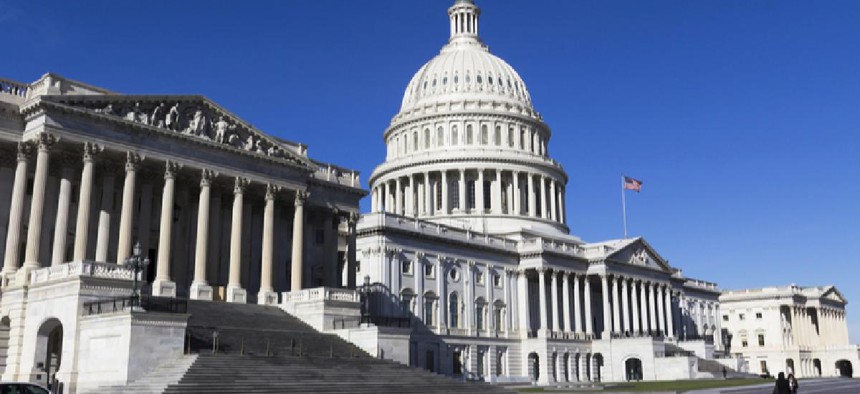
Spending debate brews ahead of NDAA markup
Days before it considers its version of the 2022 must-pass defense policy bill, the House Armed Services Committee is setting up for a topline spending debate with a bill that highlights acquisition and cyber provisions.
Days before it considers its version of the 2022 must-pass defense policy bill, the House Armed Services Committee is setting up for a topline spending debate with a bill that highlights acquisition and cyber provisions, including authority for the Space Force to install an acquisition chief and an additional $50 million for the Defense Department to protect its networks.
Rep. Adam Smith (D-Wash.), the committee chair, released the chairman's mark and executive summary for the 2022 National Defense Authorization Act, which will be considered by the full committee on Sept. 1. It has a number of tech- and acquisition-focused provisions that aim to improve the DOD's cyber posture and buying power.
The bill names a $716 billion for topline spending for the Department of Defense and $744 billion for all defense spending, which aligns with the White House budget request. The Senate's version of the bill, however, authorizes considerably more for DOD at $740 billion.
HASC Ranking Member Mike Rogers introduced an amendment Aug. 30 that would lift the topline to match the Senate's proposal, raising total defense spending to $776 billion if adopted. Rogers' amendment, if adopted, would also add $1 billion for cyber and information systems over the chairman's mark.
Focus on cyber, research
The chairman's mark adds an additional $50 million for protection of DOD information systems, while also creating entities that would make it easier to protect and share cyber threat data.
If adopted and passed, the bill would also create a new program office in the Joint Force Headquarters-DODIN that would "centralize the management of cyber threat information products across the Department of Defense."
Separately the bill also creates the Cyber Threat Information Collaboration Environment in the executive branch, which adopts a recommendation from the Cyberspace Solarium Commission and would aim to make sharing and analyzing cyber threat data easier.
The bill authorized an additional $446 million for basic and applied research, $140 million for research into position, navigation and timing (PNT) modernization and resiliency, which has been framed as a significant cyber challenge with regard to GPS data spoofing, as well as $68 million for spectrum innovation.
Another provision mandates the defense secretary develop a digital health strategy by April 1, 2022, that incorporates emerging technologies, such as three-dimensional printing, virtual reality, wearable devices, big data and predictive analytics for providing clinical care within the military health system.
Space acquisition, transparency for OTAs
The chairman's mark tweaks legislative language from the 2020 NDAA so that the Air Force could appoint a service acquisition executive for space no later than Oct. 1 2022. It also gives authority to the assistant secretary of the Air Force for space acquisition and integration the duties of the senior procurement executive for space systems and programs.
Related to space programs, the bill also directs the chief of space operations and assistant secretary of defense for space policy to review the classification levels for all Space Force programs "to determine if any programs should be lesser- or de-classified."
The bill also takes steps to make DOD data on the use of other transaction authorities more publicly accessible, according to a provision that requires recommendations for making that happen.
The bill also calls for DOD's acquisition chief to evaluate and brief Congress on "high frequency communications infrastructure, including modernization plans, coordination between Federal agencies, and infrastructure resiliency," according to the executive summary.
This article first appeared on FCW, a Defense Systems partner site.
